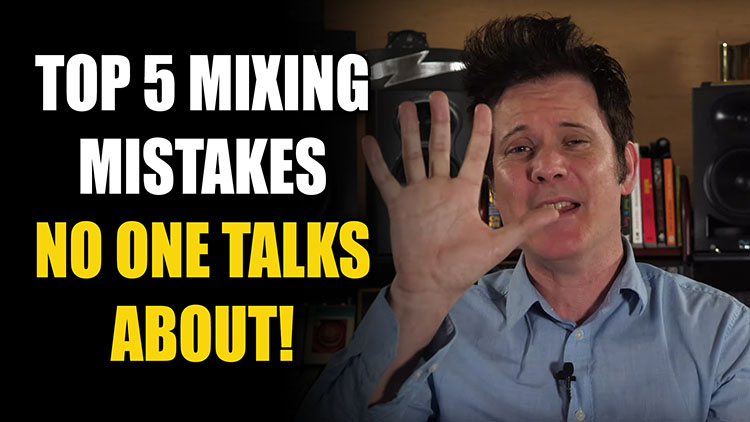Today we are going to be going over some mixing mistakes that are not talked about very often! These are things that don’t get talked about a lot when it come to mixing, but I feel are very important!
There is also a cheat sheet to go with today’s video so you can always have these tips handy!
Click here to download the cheat sheet!
1.EQ with your Ears NOT your Eyes!
Always make EQ moves based on what you hear first, not what you see! Using EQs with Frequency Analysers can be such a rewarding thing when you’re looking for a frequency that’s bothering you, but relying on visual cues alone to make EQ adjustments will not give you great results. Just because there’s a peak doesn’t mean it has to be removed, that might the inherent characteristic of the instrument. When you hear something that bothers you and you need a visual cue to find it then a frequency analyzer is an amazing tool!
2.You Don’t Need to Compress Everything
Not everything needs to be compressed! So many virtual sounds, fat synth sounds and of course very heavy guitars will not benefit from compression and often sound much smaller with added compression. Live drums give you a wealth of not only different dynamics and uneven EQ based on how they are performed and so they require more compression than programmed drums that have been recorded in perfect conditions with very evenly sampled drum hits. Compression (especially vintage units or emulations) can be used for certain colours, adding saturation and even an EQ characteristic, however, as a dynamic controller you should focus using it on overly dynamic sounds like Vocals and other acoustic instruments, while using it sparingly on instruments that have a very limited dynamics range but may require some added colouration that compression may bring.
3.Not Everything Has To Be Stereo
When everything is in stereo, overheads, pianos, room mics, reverbs, delays, stereo recorded guitars, you name it, then nothing starts to feel wide! If you want width then be selective what you put in the sides! Hard panned guitars Left and Right feel great when the ambience is only opposite, as soon as it’s smeared in the stereo field then the guitar sound doesn’t feel focussed! If you make the overheads full 100% left and right then you set the limits of the width of your mix, try 70% or 80% panning of your overheads and room mics and then the hard panned guitars will start to feel like they are spilling out of the left and right speakers!
4.Don’t Start Processing The Tracks Until You’ve Got Basic Levels and Panning
Create what you think is a good sounding rough mix getting basic balances and panning on every track first. This will tell you so much more than just starting to mix using EQ and compression. Hearing the tracks back relatively balanced and panned, allows you to choose which tracks need extra EQ or high passing and/or compression. Ultimately the lesson is to always listen as a whole! We all solo, however making sure the changes you are making works in the whole song is of paramount importance!
5.Do Less!!
Professional mixers always say that when they get sessions to mix and the first thing they do is remove an enormous amount of plug ins on each track and suddenly the song starts to come to life! We can tie ourselves in so many knots by continually adding EQ and compression until everything instrument feels flat and lifeless! Soon the more you do the more you have to do! Take frequent ear breaks to gain perspective and always remember to listen to the song as a whole.
Watch the full video below to hear more about these mixing tips!
